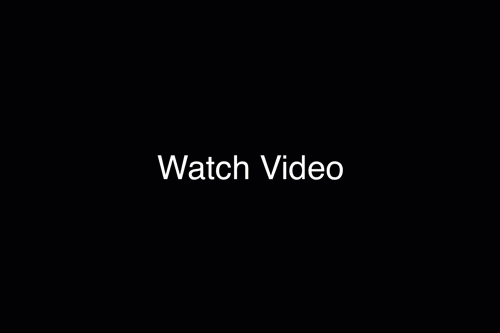PLEASE NOTE! This program content was originally developed on a construction project (and in consultation with the pharma industry) by a team of scientists, chemical engineers and validation engineers working for an engineering consultancy to rapidly train its own staff to populate an equipment validation protocol.
Minimum Entry Requirements
This program is highly specialized so you MUST have one of the following:
- You are a plumber/pipefitter/pipe welder (e.g. high purity pipe fitter and orbital welder) / site-foreman / instrument technician (i.e. you can interpret technical drawings, especially P&IDs and pipe skids) and you are fed up working outside on freezing cold construction sites.
Or - You have 1 year or more of GMP manufacturing experience or have a recognized GMP qualification.
Or - You have commissioning & qualification experience in ANY INDUSTRY e.g. Oil and Gas, Food Manufacturing, etc.
Or - You work in Quality Assurance or Quality Control in the pharma/medtech industry and are worried about having to sign off on validation documents you don’t fully understand!
Or - You are a chemical / process / petroleum / project / mechanical, etc engineer or a laboratory scientist and want to move into a validation role or learn how to correctly populate an equipment validation protocol.
Or - You already work in validation (e.g. mechanical contracting company carrying out high-purity pipework installations) but have no formal training on IQ OQ PQ equipment validation protocols.
What Kind of Roles Could I Retrain For?
You could retrain for the following roles;
- Validation Technician – Some pharma companies call this role:
- CQV Specialist
- C&Q Specialist
- Associate QA Validation Specialist
- C&Q Junior Project Manager
- Equipment & Process Validation Specialist
- QA Validation Associate
- QA Validation Specialist
- Validation Team Member
With validation roles, you could work directly for a pharmaceutical company on in-house projects or work for an engineering consultancy or engineering contractor as part of a project team on large capital projects.
Enroll in this program to learn…
- How to prioritise which parts of the equipment system are critical to validate and which parts are not etc, using component impact assessments and risk management tools.
- How to read/interpret the engineering documentation such as P&IDs, Piping Isometrics & Electrical Loop Drawings used to define the equipment system.
- How the intent of a process (like maintaining the product at the required temperature) is linked to the equipment that will be used to do this.
- The tests along with the functional test scripts necessary to confirm that the installed equipment is fit-for-purpose, i.e. that it will do what it states that it will do based on the User Requirement Specifications).
- How to use a traceability matrix tool to ensure that all requirements defined within the User Requirement Specifications (URS) are tested in the protocol.
- How to qualify equipment, instruments and piping systems, and automation controls.
- How to document all of these steps in a 100 page plus equipment validation protocol which you will develop as your end of module assignment.
You’ll produce a number of deliverables throughout the program including…
- Complete 5 Equipment Validation Protocol workshops on the following to prepare you to populate your own protocol:
- Component Level Impact Assessment
- Equipment Installation Verification
- Piping Installation Verification
- Instrument Installation Verification
- Functional Verification Test
- Complete 8-question booklets (one for every week’s worth of content) which will summarise what you have learnt for the week and ensure you retain and understand the information.
And you’ll produce your own 100-page plus IQ OQ PQ Validation Protocol to commission and qualify a clean-in-place system…
The protocol will detail the following elements;
- Product characteristics – showing what your system is looking to achieve/produce
- Production equipment – detailing the equipment necessary
- Test scripts and methods – telling you the steps involved in conducting a test
- Test parameters and acceptance criteria – defining acceptable test results
- Test checksheets – documenting and recording the test results
- Final approval – documenting that the validation process has been successfully carried out
If you’re spending money on an education program, make sure you choose one you’ll finish!
With every GetReskilled ONLINE program;
- We use one centralized platform (Moodle) where you can log into your classroom anytime. Each week, you’ll watch videos and complete a series of quizzes, tests, interactive activities, and projects. The course materials are available 24/7 and nothing requires you to be online at a specific day or time. i.e there are NO ZOOM classes and NO WEBINARS! Study anywhere, anytime, for example after the kids have gone to bed or on the weekend.
- Your working schedules are unpredictable so we offer flexible delivery. Slow down, speed up or pause the delivery of the program.
- We release only one week’s worth of material at a time and then MANUALLY check your activity logs at the end of every week to make sure that you are keeping up with your work.
- You’ll have a dedicated course leader who will email or telephone you if it looks like you’re starting to fall behind. They will work with you to develop a study plan to get you back on schedule and finish the course.
This all helps us to spot any potential issues early and helps you completely finish the program.

Here from people who’ve taken this course

Renato Chato
“This course was very informative and could greatly enhance our knowledge and understanding on Pharma Manufacturing practices (GMP, GDP, etc.). The training experience was great and details were clear. Keep it up, guys!”

Michael Cheong Yim Poh
“Once you tune in your mind set to studying online, it’s a great way to learn as you manage the pace yourself.”
Delivered by an Industry Expert
Dr. Joe Brady
Full-Time Validation Lead
Lecturer, Technological University Dublin, Ireland
Senior Associate, DPS Education
Dr. Joe Brady is a full-time practicing Validation Lead and an assistant lecturer with Technological University Dublin (TU Dublin), in the School of Chemical and Pharmaceutical Sciences. Joe is a certified trainer and highly experienced in competency-based training. He designs and prepares educational modules and full academic programs ranging from MSc, MEngSc. BSc, to Certificate level, for a range of academic institutions.
He is also a supervisor for MSc/MEngSc and PhD theses. Joe has over twenty years of project experience in the pharmaceutical, biopharmaceutical and medical device industries in Singapore, China, Ireland, The Netherlands, Belgium, France, and the USA.
Meet Your Online Classroom Support Team
When you learn at GetReskilled, you can always rely on an in-house team of experts to provide guidance and support, whenever you need it.
Course Leaders

Your Course Leaders will onboard you on the program, and help keep you motivated throughout the course.
Course Coordinators

Your CC’s are here to provide you with answers, tips, and are going to check your progress weekly to keep you on track and will reach out to you by email or even by phone if you fall behind!
Your 10-Week Class Schedule
Your Class Director will check your study logs and only will release subsequent week’s materials to you if you have been logging in for more than 10 hours per week.
And he or she will proactively follow up with you to keep you on track.
Commissioning and Qualification (IQ OQ PQ) of Equipment and Systems
Show Off Your New Skills: Get a Certificate of Completion
Complete all assessments and the end of module written assignment to receive a Certificate of Award in “Commissioning and Qualification of Equipment and Systems“.
Add details of your certificate to your CV/Resume or your LinkedIn profile.

Price
S$1,299/month
For 3 Months
S$3,499 in Advance
Save S$398
Try Us Risk FREE for 7 Days 100% Money Back Guarantee.
Application Deadline: Wednesday 15th May
Course Starts: 23rd May
Got More Questions?
Great, fill out the form below.
Or chat with us via the blue chat bubble in the bottom right corner of the page. We’re always happy to help!


